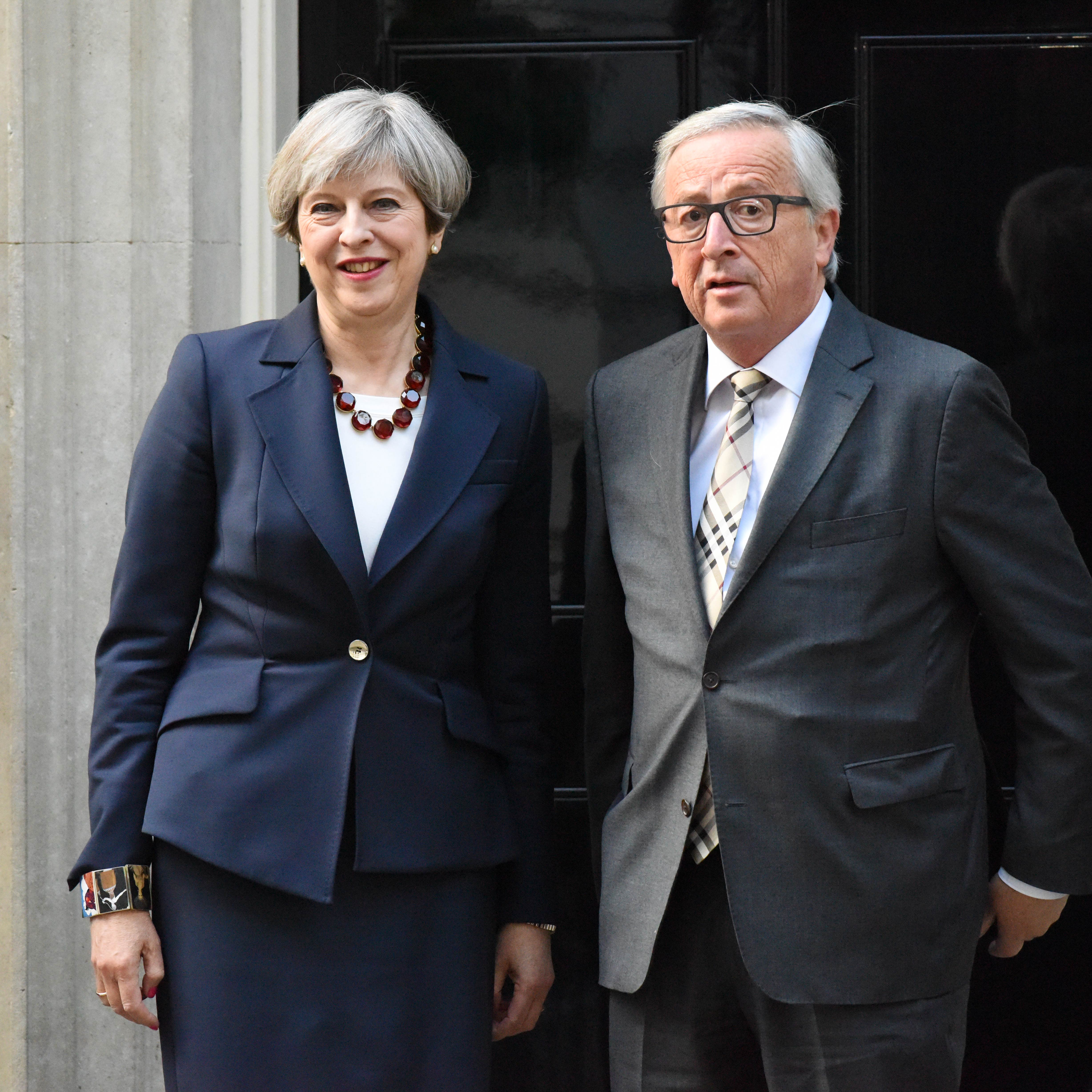This was one of many European Union summits where the form that Brexit will take was disucssed, but where the UK was no longer considered a full member state. The British Prime Minister Theresa May attended only the introductory part of the meeting with the heads of state and governments of the remaining 27 member states of the union, but the traditional summit dinner from Thursday to Friday was already served without her presence.
When I asked one of my colleagues in Brussels what May was doing now, he replied succinctly: "She is having dinner at the residence of the British Embassy with the British Ambassador." This picture of the ousted May having dinner alone with one of her ambassadors stuck in my mind and felt symbolic of her lone and ultimately unsuccessful struggle in the role of British Prime Minister.
Rise thanks to Brexit
However, Brexit, which eventually brought a premature end to her time in the prime minister's chair, played a major role in making her only the second female prime minister in British history. Prior to Brexit, she was an important member of the cabinet, the first female Minister of the Interior in British history, but she was certainly not the most visible of politicians.
Theresa May, the only daughter of Anglican cleric Hubert Brasier, was born in 1956 in the pretty South English seaside town of Eastbourne. She studied Geography at Oxford and worked in banking in the City of London for a relatively long time. In 1980, she married investment banker Philip May. Their marriage has been childless. Six years later Theresa began working in politics as a councillor in South London's Merton district. She didn’t get into the British House of Commons until her third attempt in 1997, but since then she has always defended her position, including the last elections in 2020, in which she ran after having resigned as prime minister.
In 2010, David Cameron chose her as Minister of the Interior, a position she held until 2016, when she became Prime Minister as the new head of the Conservatives. In the campaign before the Brexit referendum, she voted for the UK to remain in the union. "As an EU member state, we are more secure against terrorism and crime," she tried to persuade the British to stay in the EU. Although, in previous years, like many Conservatives, she often criticized the EU, and as a Minister of the Interior tried to restrict immigration from Union countries.
When the British shocked Europe and the world on 23rd June, 2016, with their support of Brexit, Prime Minister David Cameron resigned. As opponents of Brexit predominated even among conservative MPs, one of the most vocal Brexiteers at the time, Boris Johnson, was unable to replace him in the prime minister's chair. And so May eventually became the Prime Minister, ready to respect the result of the referendum and to bring Britain out of the EU under the best possible conditions. She took a tough approach to the Union and wanted only a trade deal. In the spring of 2017, she proposed the resumption of special relations between the United States and the United Kingdom in a new era. To consolidate her volatile position, she called elections on 8th July 2017, but failed, and her new minority government had to rely on the support of the Northern Irish Unionists.
Fall due to Brexit
This eventually broke her neck when the British Parliament rejected the negotiated agreement with the EU because of the Irish border issue. Britain had to ask for an extension of the deadline in the spring of 2019, and the country also held elections to the European Parliament in May. In June 2019, there was an open uprising in the government, which was in a stalemate, and on 24th July 2019, May was replaced by the hard Brexiteer Johnson. "I feel no resentment, but unceasing gratitude for the opportunity to serve the country I love," she said when giving her goodbye to the British in her last prime minister's speech.
Paradoxically, the agreement with the EU that Johnson pushed through at the end of 2020 after the next early elections was essentially the same as the one May had already secured. On 31st January 2021 when Britain left the EU "with an agreement", May watched from the sidelines as a Conservative MP.
The author is the editor of the Deník

Former Prime Minister Theresa May with former President of the European Commission Jean-Claude Juncker.
CV BOX
Theresa Mary May (born 1st October, 1956 in Eastbourne) is a former British prime minister.
#She studied Geography at Oxford University, worked in the City of London, then at the Bank of England from 1977 to 1983. She then became Head of European Affairs and Senior Adviser on International Affairs at APACS (UKPA), which manages the payment systems of banks and other financial institutions.
She worked in politics from 1986-1994 as a councillor in Merton in south London. She initially ran unsuccessfully in the House of Commons of the United Kingdom in 1992 and 1994. She was only successful in 1997. She then defended her parliamentary term in 2001, 2005, 2010 and 2015.
#In 2010, she became Minister of the Interior and was also appointed Minister for Women and Equal Opportunities. However, she resigned from the second position in September 2012. She was the Head of the Interior until 2016, when she sat in the chair of the Prime Minister. She was in it until 24th July 2019.